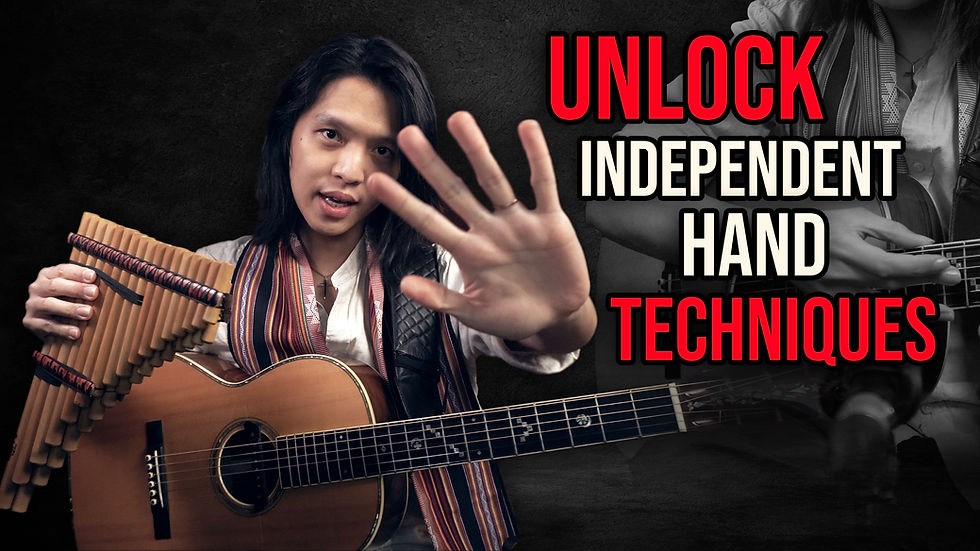Carnatic Fusion Fingerstyle Guitar - Adi Tala Korvai #6
- Neil Chan

- Dec 21, 2021
- 2 min read
Carnatic (South Indian classical) rhythms are exciting. What's even more exiting is using carnatic rhythms in different musical contexts. Here I'm a carnatic rhythmic progression on fingerstyle guitar with flamenco strumming techniques and jazz modalities.
This korvai is composed by my guru Mr V. Raghuraman, who taught me all I know in carnatic music, and I have adapted it into fusion fingerstyle guitar.
Interested in Learning Music?
Download my free resources to guide you along!
What Ingredients make up this Piece?
Just like cooking, fusion music makes use of diverse flavours and tastes of musical cultures around the world. Let's break things down to see what this fusion fingerstyle piece is made up of!
Flamenco:
Finger Rasgueado:
Powerful and rapid strums using the index, middle, and ring fingers. The concept is simple, but takes years of practice to get right!
Jazz:
Dorian Mode:
The dorian mode is similar to the minor scale, but with a natural 6th degree. This characteristic note adds an uplifting flavour to the otherwise dark sounding mode.
Quartal Chords:
Chords stacked in intervals of fourths (as opposed to thirds) creates a sense of ambiguity, where chords seem to float above the texture.
Carnatic:
Adi Tala:
An 8-beat cycle provides the a rhythmic framework from which the piece is constructed upon.
Korvai:
A korvai is a type of rhythmic composition which uses the sol (word) 'thathikithathom', and is performed 3 times in different variations.
Konnakol:
Konnakol is the art of performing rhythmic syllables vocally, and is the fundamental building block of rhythm in South Indian classical music.
Mridangam:
The mridangam is the primary percussion instrument in carnatic music, and here I replicate the percussive mridangam strokes on the guitar body.
Music Score:




Thank you for listening in! Follow along my musical journey on my YouTube, Instagram, Facebook, and website neilchanmusic.com as I share new music videos and lessons each and every week.
By Neil Chan

.png)




Comments